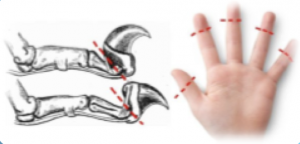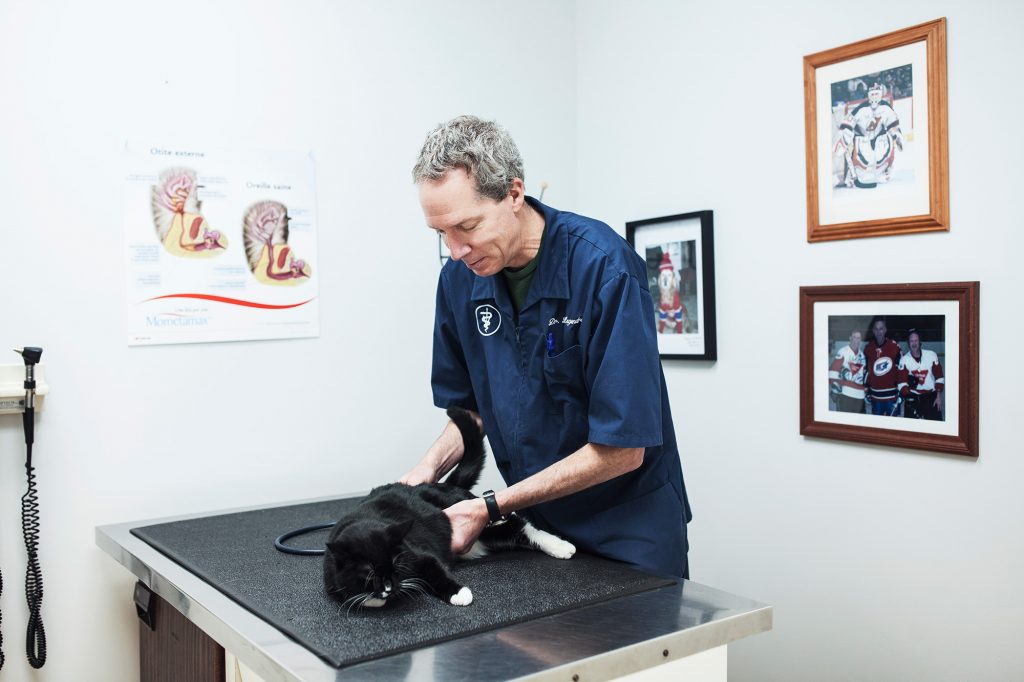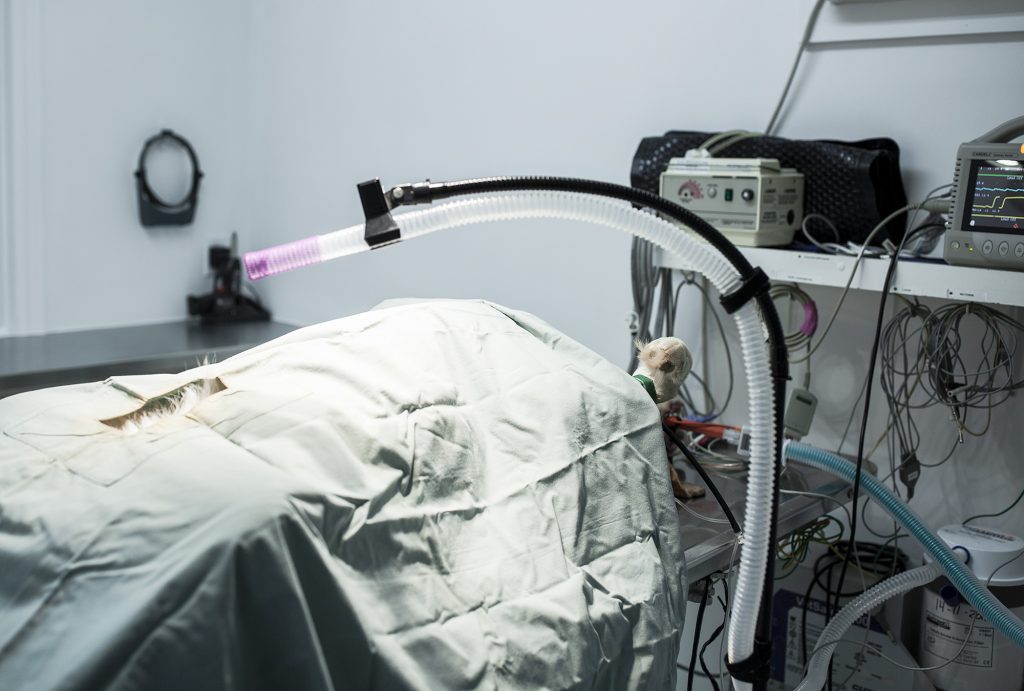Our information dashboard
FIRST YEAR OF YOUR DOG’S LIFE
Recommended Protocol for the First Year of Your Dog’s Life
Vaccination:
Although the schedule may vary, it is very important to follow a schedule for your puppy’s first vaccines. Here’s a typical “puppy shot” series to help you schedule the vaccines, including the series during their first several months of life:
- Between 6 and 8 weeks of age: First DHPP vaccine (Distemper, Hepatitis, Parvovirus, Parainfluenza).
- One month later (at 12 weeks): First DHPP booster and first Leptospirosis vaccine.
- One month later (at 16 weeks): Second DHPP booster, Leptospirosis booster, Rabies vaccine and, if needed, the Bordetella (kennel cough) vaccine, which is normally for puppies and/or dogs taking obedience classes or going into boarding.
- One year later: the DHPP vaccine is given along with Rabies, Leptospirosis and Bordetella.
- After the first full year: the DHPP and Rabies vaccines are repeated every 3 years. The Leptospirosis and Bordetella vaccines are repeated annually.
Deworming:
During the first exam, your veterinarian will prescribe a deworming treatment that will cover the majority of intestinal parasites. You will have to repeat the treatment in two weeks time. Afterwards it is strongly recommended to deworm your puppy once every two weeks until 12 weeks of age and once a month until 6 months. Depending on your pet’s lifestyle and your veterinarian’s recommendations, the treatment may vary from 1 to 4 times a year.
Flea & heartworm prevention:
The recommended testing time is beginning of April to the end of May and could be done at other times in the year but may not be as effective. We recommend that your dog be tested every 2 years to assure that the treatment is well absorbed and is working well for your dog.
The heartworm test also screens for the presence of the Borrelia burgdorferi bacteria which causes Lyme disease. This disease is spreading and becoming more common in our area; it is often transmitted by the bite of an infected tick.
After the test, the veterinarian will prescribe a treatment for your dog. There are different types of medication, from pills to topical solutions, all are administered once a month from beginning of June to beginning of November. The decision as to which medication best suits you and your animal should be made with the help of your veterinarian.
Sterilisation:
According to new studies, waiting between 8 and 12 months to spay or neuter your pet could reduce the risk of urinary incontinence, orthopedic problems and the development of certain cancers in large breed dogs, as for small breed dogs, to ensure that retained baby teeth can be diagnosed and paired with the sterilization anesthesia. The decision of when to spay or neuter your pet is one you should make with your veterinarian based on race, size, and lifestyle.
Included in all spaying of female dogs, because the surgery is longer for females, are intravenous fluids which will help eliminate the anesthetics used during the operation from their system more quickly and they will receive an analgesic during surgery and for at least 4 days post-surgery.
We also offer a pre-anaesthetic blood test, done the morning of the surgery. This helps to verify that the internal organs (liver, kidneys…) are healthy, that the animal is able to withstand the anesthesia and at the same time reduce some anaesthetic risks.

FIRST YEAR OF YOUR CAT’S LIFE
Recommended protocol for the first year of your cat’s life
Vaccination
Even though the calendar varies during the year, it is very important to follow a schedule for your kitten’s first vaccines.
Your kitten should receive 3 doses of vaccine in it’s first year, here’s a plan to help schedule the vaccines:
- Between 6 and 8 weeks: First (base) vaccine (Panleukopenia, Rhinotracheitis, Calcivirus)
- One month later (at 12 weeks): First booster base
- If your cat goes outside, we also recommend the feline leukemia vaccine, at this stage
- One month later (at 16 weeks): Second booster leukemia and rabies.
- One year later, the base vaccine is given along with rabies and leukemia.
- After this, the base vaccine is only given every 3 years. The rabies and the leukemia vaccines are done yearly with their annual check-up.
Deworming
During the first exam your veterinarian will prescribe a deworming treatment that will cover the majority of intestinal parasites. You will have to repeat the treatment in two weeks. After the first two treatments, it is strongly recommended that you deworm your animal 1 to 4 times a year, depending on your pet’s lifestyle and on your veterinarian’s recommendations.
Flea Prevention
There are many treatments available to help prevent flea infestations. Discuss with your veterinarian which is best for you and your animal. The time to start treatment is usually in June and carries on until November or the first frost.
Sterilization
Cats can be sterilized from the age of 5 months.
Intravenous fluids are included in all sterilisations of female cats because the surgery takes longer than for males. This helps to eliminate the anaesthetics used during the operation from their system more rapidly. They will also receive an analgesic during and for at least four days following the surgery (males, for two days).
We also offer a pre-anaesthetic blood test, done the morning of the surgery. This helps us to verify that the internal organs (liver, kidneys…) are healthy and able to withstand the anaesthetic.
* Your animal needs to be up to date with its vaccines before being hospitalized.

DECLAW ALTERNATIVES
Declawing in the cat is a surgery that involves amputation of the first phalanx of its fingers. The goal here is not to make you react by comparing these shocking images of such amputation. The goal is first and foremost to explain that there are other options than this surgery.

Reasons to make their claws:
- To file them
- Stretch their column
- Make marking
There are two methods to prevent cats from clawing on our property.
Within 5 days:
- Having a good scratching post (1)
- Put it in a good place
- It must be attractive (eg cat grass)
In 10 days: (if your pet has already spoiled a place)
- Make the place unpleasant, eg: Put aluminum foil
- Place the alternative (the scratching post) in the same place
- The scratching post must be more attractive than the old place
- It is always possible to try these methods with Soft Paws to give time to see if the scratching post works well without damaging anything.
The post:
It should be high enough so that your cat can lie down full length to stretch its spine.
Material: The pole must be covered with material that has a texture that your cat likes, such as carpet, rope, cardboard and wood. Make him discover the joys of planting his claws by playing with a toy on the scribbler or by putting a little cat grass there.
Location: a visible place, like the entrance to a room to show that it is its territory (for example on the side of a couch at the entrance of the living room).
Stability: The pole must be as stable as a tree. N.B: Cats are more attracted to vertical lines that mimic the lines of trees, which is why they are often attracted to wooden door frames.
NB: If a cat has already damaged a wooden structure or a cloth with its claws, the simple view of the vertical striations made by its claws will cause it to start again. It is therefore necessary to eliminate any apparent damage.
The soft paws:
A very interesting alternative to declawing is the installation of claw covers such as Soft Paws. These claw covers are easily applicable and cover the sharp point of the claw. They protect all your belongings without any problem and avoid big surgery.

Did you know that … The risk of a cat hurting your child is much less than the risk of injury with a bicycle. Declawing is illegal in more than 39 countries around the world, as in Australia, Brazil and most European countries. In some countries, repeat offenders are even exposed to prison sentences. Several Californian cities have also prohibited it since 2009. The consequences of surgery can be significant. There may also be potential complications (hemorrhage, infection, etc.).
WHY WE SUGGEST STERILIZATION
Reduces several unpleasant behaviors:
- Running away and wandering:
Sexual urges being suppressed, the search for a partner will no longer be a priority for your animal. There will therefore be a reduction in impromptu running away, vagrancy, the risk of accidents and the danger of contracting contagious or other sexually transmitted diseases.
- Territory Marking:
Since your pet is no longer sexually active, there will be less need to mark territory. Additionally, the smell of a fertile cat’s urine is often intolerable compared to that of a neutered male.
- Aggression and risk of fights:
Since your pet felt less need to defend its territory, the number and intensity of fights will decrease in the majority of cases.
Reduces certain health problems:
Studies have shown that fertile female dogs and cats have an increased risk of developing mammary gland tumors (equivalent to breast cancer in humans) and life-threatening uterine infections in getting older. For their part, unneutered male dogs may have testicular tumors or prostatic hyperplasia (enlarged prostate, sometimes causing constipation and incontinence).
Heat signs and reports in females:
There will be no heat period in neutered cats or female dogs. So no nasty or unpleasant meows in the middle of the night will bother you! Bloody vaginal discharge lasts 2 to 3 weeks in fertile female dogs and occurs on average twice a year. In cats, heat lasts about ten days and occurs every 2 or 3 weeks, as long as the cat is not mated during the heat season, which can last 2 months.
PET INSURANCE
It is now possible to insure our pets in order to provide them with the care they will eventually need and avoid unforeseen veterinary fees.
Animals are also members of the family. We know how heartbreaking it is to have to abandon or have our animal euthanized for lack of budget to treat it.
According to statistics, your pet has a 1 in 3 chance of needing to see an emergency vet within a year for an accident or any health problem.
Veterinary technology has come a long way in recent years; digital X-ray machine, ultrasound, sophisticated on-site blood analyzer with results in minutes, dental X-ray, dentistry equipment, surgical monitoring monitor, specific medication for animals, etc. But unfortunately it all comes at a cost. All these devices are expensive and the staff must be more and more qualified.
Wondering when should you take out insurance? As soon as possible. Upon adoption of your pet. This will allow you to pay a lower premium and to have more choices of insurance company.
By taking out insurance, you guarantee yourself the peace of mind of being able to offer your companion the best health care.
HOW TO BE PREPARE FOR YOUR APPOINTMENT
For your first puppy or kitten appointment
Fill in the form by clicking here
For a health problem
Fill in the form by clicking here
Blood control
- Blood control for a diabetic animal: Ideally, we recommend that you take your appointment 4 to 6 hours after you have given your insulin.
- Blood control for Phenobarbital: Ideally, we recommend that you take your appointment 2 hour before you give the medication or 2 hours after.
- Blood control for the T4 (thyroid gland): Ideally, we recommend that you take your appointment 4 to 6 hours after you have given the medication.
- Blood control for the ACTH: Ideally, we recommend that you take your appointment 2 to 4 hours after you have given themedication.
For a geriatric work-up
Fill in the form by clicking here

STERILISATION
Sterilisation *To be hospitalized, your pet must have received its vaccines at least 10 days before the intervention. You need to remove your pet’s food between 19-20h the night before. You can leave its water available. You need to bring your animal between 8:30-9h.
The technician will receive you to get some information like the weight, the temperature and to confirm the procedure that is desired. She will verify if there is an umbilical hernia, dewclaws on the back paws or residual baby teeth that need to be taken care of during the intervention. She will explain and ask about pre-anaesthetic blood tests and lasers surgery. Before leaving, make sure to take your appointment for the post-surgical recommendations with the technician. Thereafter, your pet will be taken to the preoperative room. The technician will take blood if needed and do the test on site. The veterinarian will do a check-up to make sure your animal is healthy and will prescribe the appropriate anaesthetic protocol.
Since the surgical intervention on female dogs and cats is longer, inter-venous fluids will be installed to maintain adequate blood pressure during surgery. A sedation and pain relief drugs will be given 30 to 45 min. before the intervention. Then it will be given drugs to put it under, which will enable us to install an endotracheal tube in order to maintain it with a general anaesthetic gas during surgery.
As soon as the surgery is finished, we stop the gas and your pet will wake up slowly. Some animals will be able to leave the same evening under the veterinarian consent. When picking up your pet, you will encounter the technician which will give you post-operative recommendations.

SURGERY OF A CRUCIATE LIGAMENT
For the surgery of a cruciate ligament
- Start the anti-inflammatories prescribed by your veterinarian
- Start glucosamine
- If your pet is overweight, cut down on his food rations and start a food designed for joint problems
- Also adapt your environment for a safe return of your pet to the house. Use non-slip mats where there are slippery floors.
- Avoid stairs. Get him to sleep on the ground floor. Provide a ramp or child fence. Provide a cage if needed.
HOW TO COLLECT AN URINE SAMPLE
How to collect an urine sample from your dog:
You need a clean container without any residue or a plastic ladle bought at the dollar store. Pour some boiling water in order to kill as much bacteria before collecting the urine. Sterile container that your veterinarian has provided.
Collection method : The urine sample needs to be fresh. There should be no more than 6hrs between collection and analysis. Try to collect the sample when your animal has a full bladder for example: Right after waking up. Thus, it will have a big urge to urinate and will not pay attention to what you are doing. It is often easier when you are two peaple. One person holds the leash and the other fellow behind. When your animal stars to urinate, discretly put the container under it to collect the urine. Transfer the urine in the sterile container. We just need around 10 ml. If you can’t brind the sample within the hour please put it in the refrigirator.
How to collect an urine sample from your cat:
The veterinarian has left you a collection kit. You need to empty your cat’s the litter box. It needs to be well cleaned and desinfected. It cannot have any remaining litter dust. Empty the beads in the clean litter box. As soon as your cat urinates, collect the urine with the pipette and transfer it in the sterile container. Bring us the sample as soon as possible. The urine sample needs to be fresh. There should be no more than 6hrs between collection and analysis. If you can’t brind the sample within the hour please put it in the refrigerator.
PREVENTION AND TREATMENT OF PARASITES
What are internal parasites:
Intestinal worms live in the stomach and intestines (GI track). Signs that indicate the presence of intestinal parasites include a dull and dry coat, voracious appetite, thinness, diarrhea and, if the infestation is severe, vomiting. The signs are always more serious in young animals. It is also possible that the animal shows no symptoms.
Heartworms are transmitted by mosquitoes. They are found in the arteries and the heart, which can have serious consequences for your pet.
Lungworms infect dogs when ingesting small snails, slugs or molluscs. The parasite develops in the heart or the pulmonary artery which can cause strong coughing fits, exercise intolerance, lethargy, vomiting…
What are external parasites:
The flea is a tiny arthropod; a 6-legged insect that feeds on the blood of its host. During its life, the flea goes through 3 stages before becoming an adult flea: at “birth” it is an egg, the egg hatches into a larva and the larva forms a pupa (in a cocoon). The cocoon looks like a sticky microscopic ball and this is often how your pet will catch this nasty bug, by sticking to its paws or hairs. The adult flea will emerge from the cocoon only when a host is available, detecting the body heat, and will become the dreadful flea. A well-fed adult flea reproduces at lightning speed and the cycle then begins again, infecting your animal and invading your environment with fleas. They are not only invasive; they also transmit intestinal parasites (the tapeworms).
The tick is a small mite that measures a few millimeters. It can transmit several diseases, the most common of which is Lyme disease. It is active when the temperature is above 4°C. It climbs on tall grasses or shrubs waiting for its host to pass by and quickly climbs aboard. Once on its host, it will take one to two days to anchor itself firmly before taking its meal, which will also last several days. Unfortunately, it is often only when it is full of blood that it is detected and will have had the time needed to transmit the acquired diseases. This is what you need to remember: Lyme disease may not be passed on to you by your dog or cat. However, if your pet is exposed to ticks, there is a good chance that you too are exposed to ticks and therefore to Lyme disease or Anaplasmosis, which is increasingly present in Quebec. The signs of Lyme disease in dogs are fever, depression and lameness due to joint pain; in rare cases, dogs will develop neurological signs or kidney disease. The presence of antibodies can easily be checked by a blood sample analyzed directly at our veterinary hospital.
Several kinds of mites:
Ear mites (Otodectes) are small, microscopic mites that are usually found in the ear canal of dogs and cats. These mites are easily transmitted from one animal to another by simple contact. They can also be transmitted from dog to cat and vice versa but do not affect humans.
Dog sarcoptic mange (scabies) is a parasitic mite. These mites burrow just beneath the skin digging small tunnels to lay their eggs. This highly contagious skin disease causes intense itching, hair loss, redness and scabs on the skin of the belly, ears and elbows.
WHAT IS THERE TO LEARN FROM ALL THIS? Prevention is the best treatment!
A monthly treatment in the form of a tablet or an easy-to-administer topical treatment is sufficient to prevent these parasites.
Speak to your veterinarian about the most appropriate parasite prevention program for your pet based on its needs and lifestyle.
Contact information
Phone: 819-326-6062
Toll Free: 888-695-9095
Fax: 819-326-2230
228, rue Principale est (Route 117)
Sainte-Agathe-des-Monts, QC J8C 1K6
Schedule
Monday to Friday: 8am to 6pm
Saturday: 8am to 12pm
24-hour emergency service in collaboration with the CVL of Laval
© Hôpital vétérinaire Sainte-Agathe | Web Creation Metamorfic.ca

